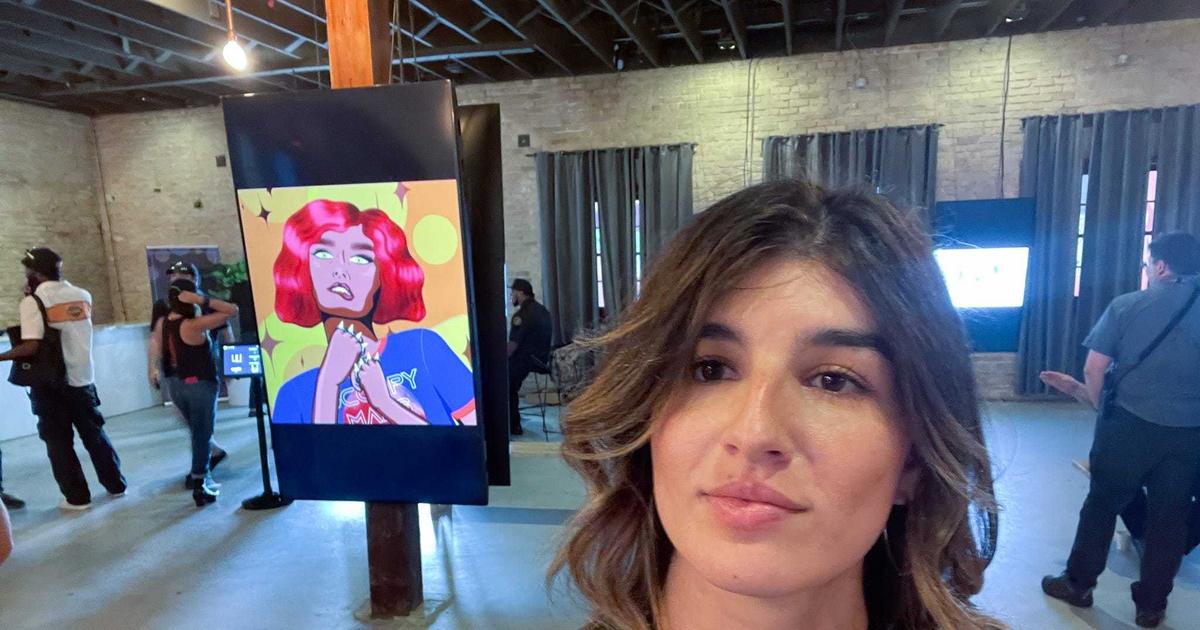Business Insider Edition
Authors:
I went to a physical art gallery where NFTs were displayed on TV screens.
I saw cartoon-like illustrations, trippy cityscapes, and photos of cars.The gallery felt like more noise on top of the already-frothy NFT market.
Consensus 2022 in Austin, Texas, was a mega-gathering of crypto disciples, lawmakers, and high-brow executives.
It offered many a spectacle for attendees, like a dogecoin-covered Mclaren, a pull-up “HODL” bar and a real-life art gallery for NFTs.
In the exhibit, I saw pictures of cars, trippy cartoon portraits, manipulated images of sweeping city landscapes, and dystopian-looking scenes, to describe a few.
But roaming the room full of TV screens showed me that giving NFTs the traditional art treatment just felt like it was amplifying the noise and confusion that already exists in the $41 billion space.
It was confusing and un-stimulating
It’s not typical to see the digital assets in some sort of physical display. They’re designed to be held online in a crypto wallet or other storage method, after all.
NFTs give people unique ownership over any kind of object, ownership that is secured on the blockchain and paid for with cryptocurrency. The concept thus far has largely been applied to the art market, which has birthed the $1 billion Bored Ape Yacht Club collection, and other shockingly expensive works.
But even crypto proponents have called out NFTs as distractions from their true goal: a decentralized financial system. Binance founder Changpeng Zhao, for example, told Fortune in April that people participating in the NFT craze “may have lost their mind.”
Hype aside, other evangelists have heralded the art world’s harnessing of NFTs as a good thing, saying they can empower creators who can now reach their customers more directly and get paid more easily.
Nevertheless, the art gallery I went to was confusing.
I expected a QR code to be displayed next to each screen so that I could scan it with my phone and see the title and artist name. But no such label was in sight. (Other photos and reports from the event show QR codes with links to bid on artworks, which may have been added later.)
#Consensus2023 (@consensus2023) June 11, 2022
Each screen displayed an NFT for a few seconds before changing to another you could stand in front of one for a full minute and see various photos, illustrations, and other visual pieces.
But even if there were QR codes visible for me, I felt the same hesitation that I get when I’m looking at NFTs online, hesitation around putting my money towards something where the resale value can change drastically overnight with no rhyme or reason.
The art gallery felt like noise on top of noise
The installation was presumably meant to simply exhibit to people how NFTs could be showcased like traditional art. Perhaps, in theory, artists could rent out space in a venue and display their work for viewers who could buy them online.
The market for NFTs has boomed in recent years, with giant players like NFT marketplace OpenSea reaching a $13 billion valuation and celebrities from NFL quarterback Tom Brady to actress Lindsay Logan jumping on the bandwagon.
But with its rise came the federal investigations and concerns around money laundering, fraud, theft, and a hype-driven bubble doomed to pop eventually.
As Fast Company wrote in December 2021, there’s a reason why traditional art museums haven’t heavily focused on NFTs: many don’t want to be in range when it bursts.
Authors:
Thanks for signing up for our daily insight on the African economy. We bring you daily editor picks from the best Business Insider news content so you can stay updated on the latest topics and conversations on the African market, leaders, careers and lifestyle. Also join us across all of our other channels – we love to be connected!
© 2022 africa.businessinsider.com

